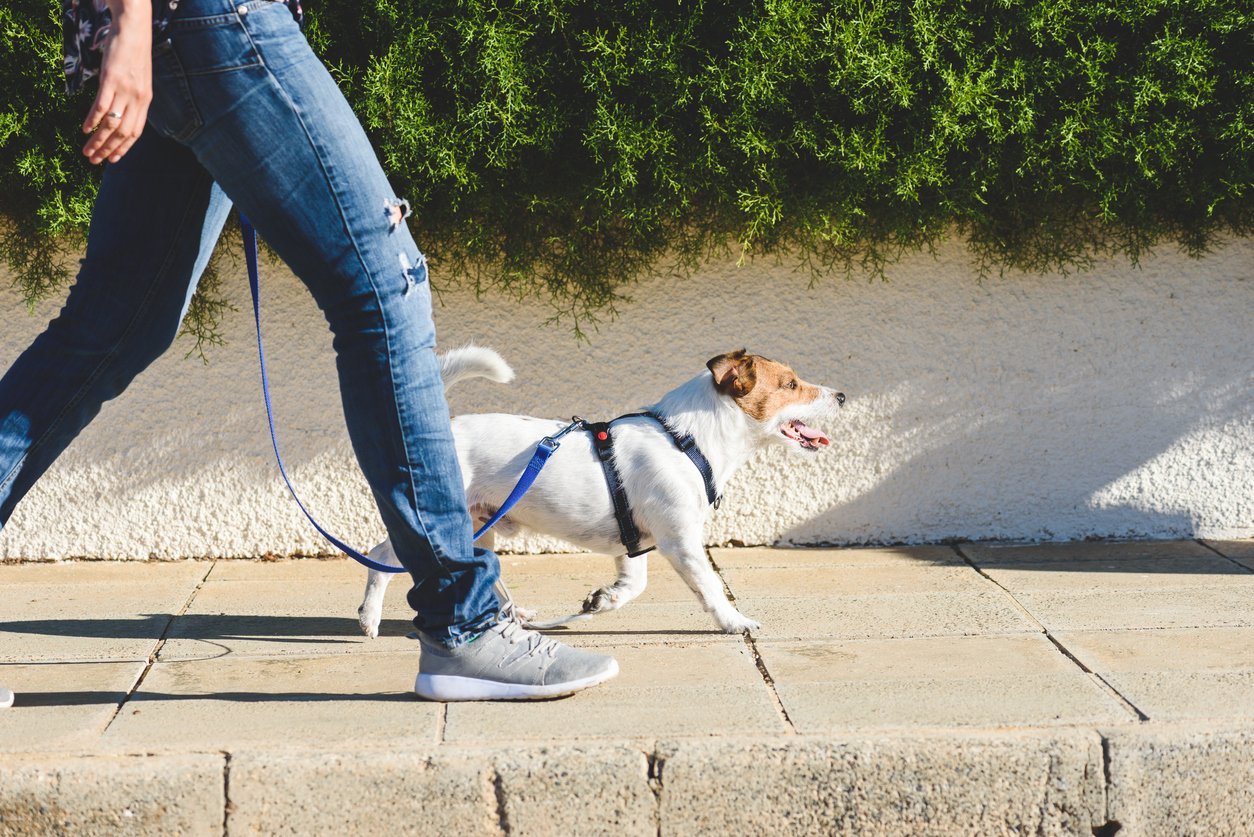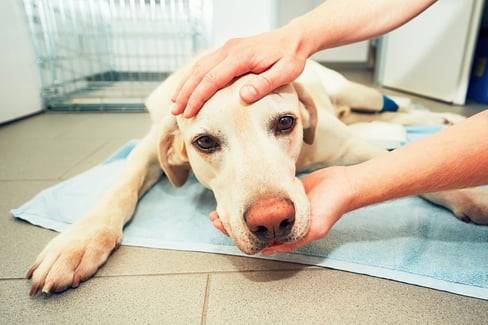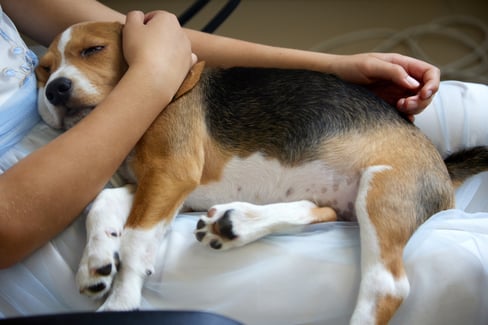Table of Contents
No one knows your dog’s normal better than you. And it can be scary when you notice your pooch isn’t acting quite right. Like if his/her dog back legs are weak and shaking.
But don’t immediately panic. There are a variety of reasons your dog could be losing control of his/her back legs, some more serious than others.
Whatever the cause may be, though, there are treatment options available so you can ensure your pup lives as pain-free a life as possible.
In this article, we’ll go through causes, prevention tips, and dog back legs weak and shaking treatment options.
But first, let’s go through some symptoms of a dog losing control of its back legs.
Symptoms of Dog Losing Control of Back Legs
If your dog is losing control (or has lost control) of his/her back legs, you’ll be able to tell because he/she will be displaying one or more symptoms, including the following
- Trouble walking
- Lameness
- Back legs collapsing
- Paralysis
- Loss of bladder or bowel control
These symptoms are not subtle and may seem obvious. But it can be important to differentiate them because they can provide insight into the underlying condition causing the loss of control and its severity.
Trouble Walking
A dog losing control of its back legs will likely have trouble walking (if the poor pup can walk at all). The back legs may appear weak, shaky, or unsteady. Your dog’s steps will likely not have an even rhythm and may look slightly strange or uneven.
Just because your pet is having trouble walking does not necessarily mean they have lost or are losing control of their hind legs. There could be other conditions underlying your pet’s issues. For instance, your pooch could be injured or have their hind legs in pain.
Make sure you pay attention to your pup if you notice them struggling to walk and watch for any other signs or symptoms of injury, pain, or other issues.
Lameness
Lame dog is defined as when one or more of their legs aren’t working properly.
Lameness can range in severity, but if your dog is displaying symptoms of lameness in its hind legs, it may be losing control of them.
However, like with trouble walking, there could also be other reasons for this lameness. Your dog could have injured their legs, for instance.
If you notice lameness in your dog, see if you can notice any other signs of injury or pain, like
- Swelling
- Legs sensitive to touch
- Wounds of any sort
- Any sort of deformity on the legs
Back Legs Collapsing
If your dog is losing control, or has completely lost control of their hind legs, their back legs may collapse.
There are various reasons for this, including spinal injuries, diseases, muscle atrophy, etc. We’ll get more into some of these medical issues later.
For now, it’s important to note that if your dog’s back legs do collapse, you should get them to a vet as soon as possible so your vet can examine your dog and identify what the issue is so that your dog can then receive the proper treatment.
Paralysis
Another symptom of your dog losing control of its back legs is paralysis. If your dog’s legs have collapsed, as in the previous symptom, your dog may be suffering from paralysis of the hind legs.
This could result from a serious spinal cord injury or other diseases, illnesses, or conditions. If your dog is suffering from paralysis anywhere, including in the hind legs, you should take your dog to the vet as soon as possible. Your vet will be able to examine your pet so the issue can be identified and treated appropriately.
Loss of Bladder and Bowel Control
This symptom is less about losing control of the hind legs or more about losing control of the back end in general. But, if your dog is losing control of its back legs, it may be losing control of the back end. Another symptom of that loss of control would be a loss of control of the bladders and bowels.
If your dog loses control of its bladder and bowels, it may begin having accidents in the house because it won’t be able to hold it until you let them outside.
Not only can this be an unfortunate circumstance to deal with, but underlying medical issues can cause it. So, if your dog is becoming incontinent, take them to the vet so your vet can examine your dog and identify the problem. This can be especially important if your dog has been suffering from any of the other symptoms on this list.
Dog Hind Legs Shaking Causes
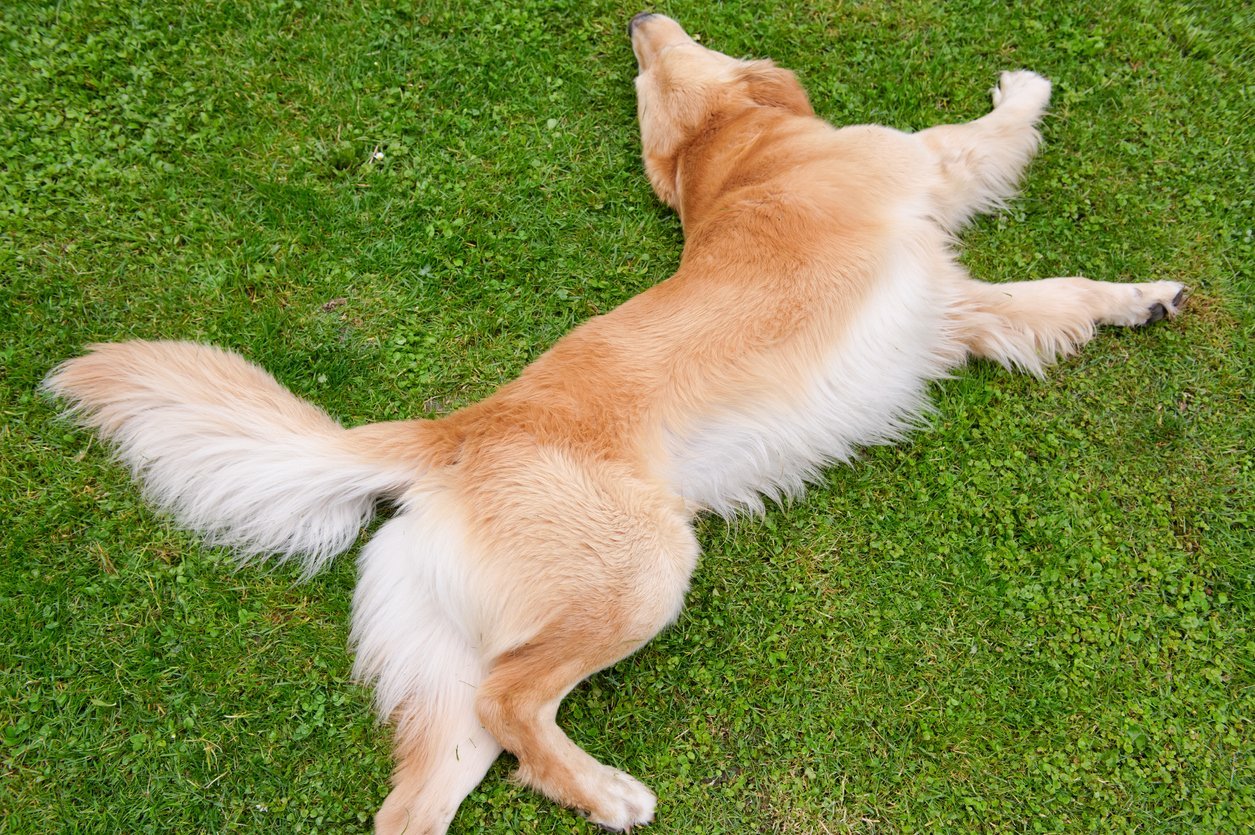
There are many medical conditions, diseases, and issues that could cause dog hind legs to be weak and shaking. We’ve provided some insight into some of these causes below, including
- Muscle atrophy
- Injury
- Seizures
- Diseases
Dog Weak Hind Legs Muscle Atrophy
Muscle atrophy, as described in our article Dog Muscle Guide – How to Maintain Excellent Canine Muscular Health, is a loss of muscle that typically happens as a result of lack of use. This can happen due to mobility-reducing health conditions, surgery recovery, or lack of use in aging.
Arthritis in your dog’s back legs may cause the muscle in your dog’s legs to atrophy. Not so coincidentally, arthritis is another condition that could cause your dog’s legs to become shaky and weak.
To read more about arthritis in dogs, you can check out our article Understanding Dog Arthritis – Symptoms, Causes, Preventions, Q&A.
But, whatever the cause may be, the result of muscle atrophy in your dog’s hind legs is that your dog’s hind legs will be weaker. So, if your dog’s hind legs suffer muscle atrophy, they may shake.
Dog Weak Hind Legs Injury
Your dog’s hind legs could become shaky and weak due to injury. There are a variety of injuries that could affect your dog’s back legs. Some of those injuries are described in the table below.
| Injury / Condition | Description |
| Broken Legs | Just like people, dogs can break their legs. And when they do, their legs will be weaker and will hurt to stand on or put weight on, which could make them shaky and cause lameness |
| Torn ACL | As described in our article Comprehensive Guide on Dog ACL [Prevention Tips Included], a torn ACL is an injury to the ACL ligament in a dog’s knee. This injury can be quite painful, causing weak, shaky legs and/or lameness. |
| Cut/Wound | A cut or wound, specifically a particularly deep or severe one, may cause your dog to have shaky legs. A serious enough injury may cause some lameness, too. |
| Infection | An infection can be deeply painful for your pup, and can potentially do a lot of damage to your pooch’s leg. Infections may not seem like a big deal, but they can be, so it’s a good idea to get your dog checked out by a vet if they have one. |
| Luxating Patella | Luxated or dislocated patellas (kneecaps) can cause pain and a pup’s ability to walk, resulting in weak and shaky legs for the poor, affected pooch. |
| Arthritis | This condition is what happens when the cartilage and fluid that cushions movement between the joints begins to wear away until the joints are pressing on each other. It can cause your dogs a lot of pain, and make their legs shaky and weak. |
Dog Weak Hind Legs Seizures
If your dog has a seizure, its legs may become shaky and weak. There could be other symptoms as well, like
- Your dog chewing the air
- Your dog collapsing
- Your dog twitching or convulsing
- Your dog has lost control of their bladder and bowels
If your dog has been having seizures, they could have epilepsy or other underlying medical conditions, some of which could be quite serious. It’s important that once the seizure is done, you take them to the vet so your vet can examine your pet, identify the issue and begin any necessary treatment.
Dog Weak Hind Legs Diseases
Your dog’s hind legs could also become shaky and weak due to disease. There are a variety of different diseases that could affect your dog’s back legs. We’ve laid out some of these diseases in the table below.
| Diseases | Description |
| Spinal Diseases | Medical conditions (including diseases) like degenerative myelopathy (DM) and intervertebral disc disease (IVDD) that affect the spine can cause issues with use in the back legs, including shakiness, weakness, or even paralysis |
| Certain Cancers | Can affect your dog’s legs, making them weaker and shakier, especially when your dog is attempting to stand on or use them. |
| Cushing’s Disease | This disease, among other symptoms, can cause muscle weakness over time, which can cause paw knuckling, according to Walkin’ Pets by HandicappedPets.com. |
Dog Losing Strength in Back Legs Prevention Tips
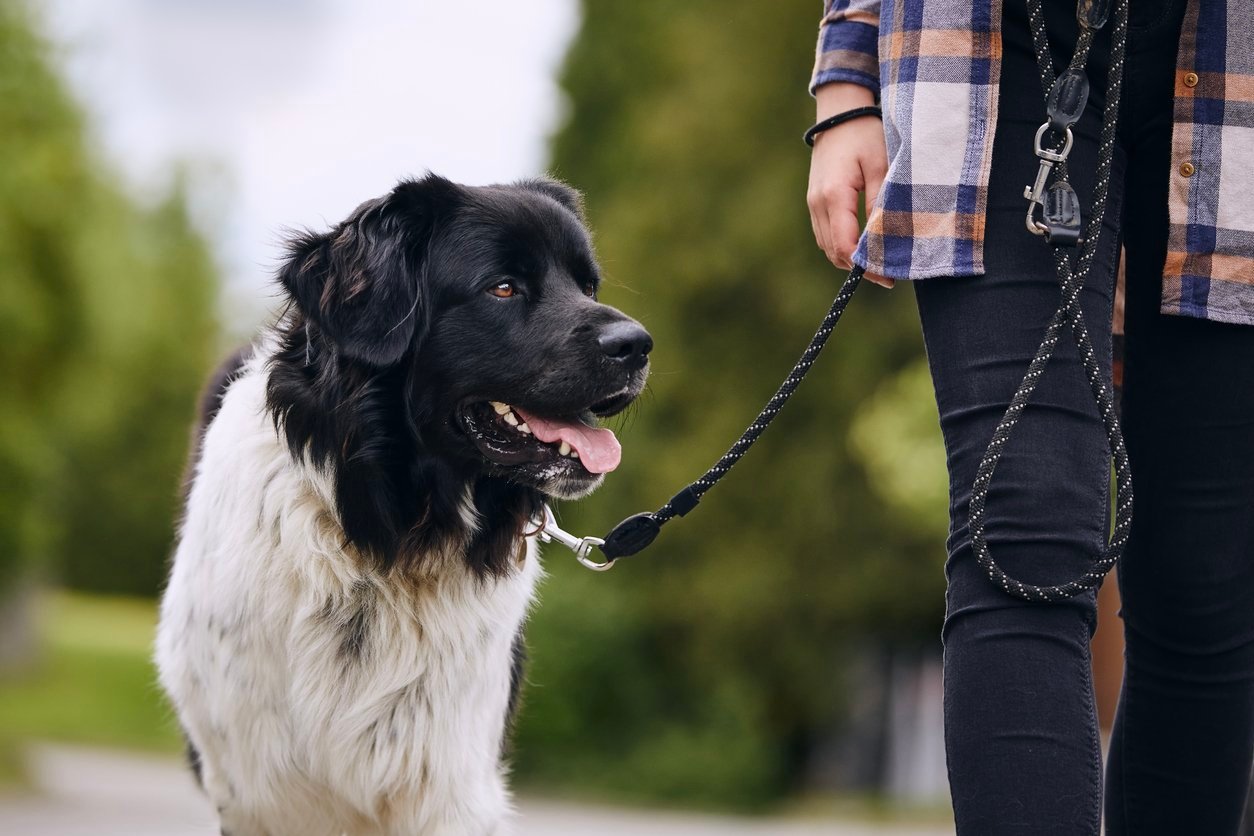
Although you can’t guarantee your dog’s back legs will never get weak and shaky, there are some things you can do to help prevent it. Some of those things include
- Balanced diet
- Supplements
- Exercise
- Rest from exercise
Balanced Diet
They say abs are made in the kitchen. Well, so is the health of your dog. To keep your dog as healthy as possible (which will help prevent injury, disease, and illness), you can’t ignore their diet. You’ll need to feed your dog a healthy, balanced diet so your perfect pooch can stay mobile and strong.
You’ll need to do some research to find the best dog food for your dog. Different dog brands will have different amounts of filler ingredients and may target different things (age groups, health issues, etc.). But don’t worry; we begun the research for you with our blog post Top 10 Best Canadian Natural Dog Food & Supplements.
Supplements
Following our previous prevention tip, you can boost your pup’s balanced diet by adding supplements to add that extra boost of nutrition.
For instance, you can get joint supplements like our TRI-ACTA for pets and TRI-ACTA H.A. for pets, which include
- Glucosamine, which helps repair cartilage
- MSM, which helps reduce pain and inflammation
- Chondroitin, which helps prevent the destruction of cartilage
- Hyaluronic acid, which helps lubricate joints
These can be beneficial to ensure your dog’s legs stay strong and stable. There are other types of supplements than just joint supplements, but they are important for keeping up the strength of your dog’s hind legs.
TRI-ACTA for Pets
A proactive approach for developing and younger adult pets to maintain optimal joint health mobility, minimize inflammation and fend off age-related ailments.
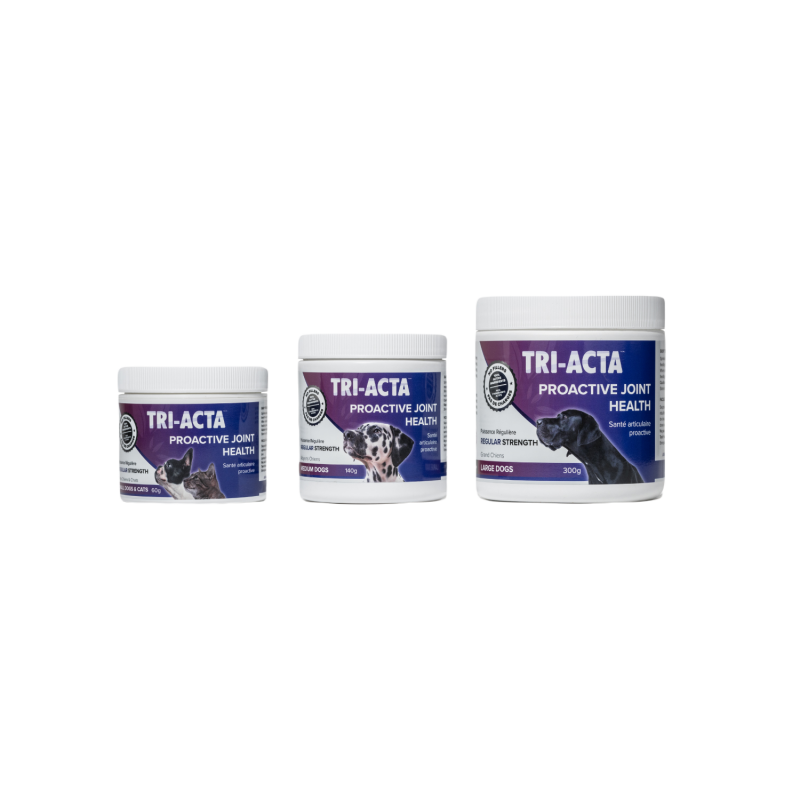
Exercise
Going for daily walks, playing fetch, swimming, etc. Whatever exercise your dog likes to do to keep them moving is important to incorporate into your dog’s routine.
Because just like getting regular exercise is an important part of a person’s healthy routine, it’s an important part of a dog’s, too.
Regular exercise keeps your dog’s muscles strong, limbs agile, and heart pumping. Just like it’s good for you, it’s good for your dog.
So, an important part of injury and illness prevention is to exercise your dog regularly, so you keep them strong.
However, you want to avoid overworking your dog because this can negatively impact your dog’s health. This brings us to our next prevention tip…
Rest from Exercise
If you work out regularly, you’ll know that rest days are as important as workout days.
And the same can be true for your dog. It’s important not to overexert or overwork your dog by making them exercise too much and/or too intensely.
Partially, the amount of exercise your dog needs depends on its breed, how large it is, and how high energy it is. Some dogs need a walk every day followed by rest, some a daily walk won’t be enough, and some would be better off with occasional walks.
If you’re unsure how much exercise and rest from exercise you should be allowing your pup to have, we recommend consulting with your vet or other dog care professional.
Dog Back Legs Weak and Shaking Treatment Options
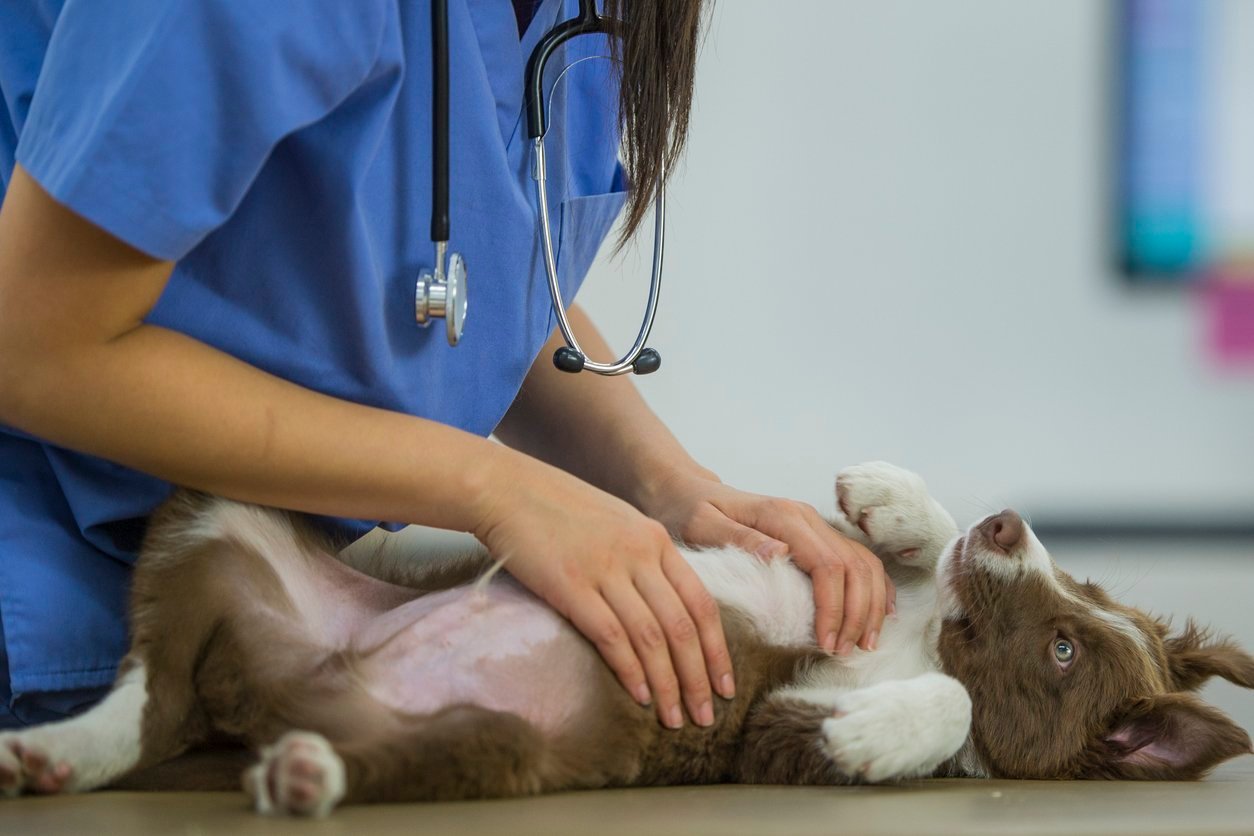
There are various treatment options when your dog’s back legs are weak and shaking, including for many of the medical conditions we’ve mentioned in this article. Some of those treatments include
- Visiting the vet
- Medication, including prednisone
- Supplements
- Surgery
- Physiotherapy
- Weight loss
Visit the Vet
When something seems wrong with your dog, like they have dog back legs weak and shaking, the first thing to do is always going to be to visit your vet. Your vet can examine your dog, identify the problem, and promptly begin a treatment plan.
Medication
Medication can be used to treat different medical conditions associated with weak and shaking legs or to manage pain. Some form of medication can be used for every ailment in this article.
- Muscle atrophy, pain medication can be used for any pain associated with the reason for muscle atrophy, like arthritis, for instance
- Injury, pain medication, medication for infections, etc.
- Seizures, some medications can be prescribed to dogs who commonly get seizures, typically phenobarbital or potassium bromide
- Diseases, it depends on the disease, but medication can be used for pain, inflammation, symptom management, and/or treatment. For instance, Cushing’s disease is commonly managed with trilostane or mitotane.
Different types of medications are used for different issues. One medication that can be used is prednisone.
Dog Weak Hind Legs Prednisone
Prednisone is an immunosuppressant and anti-inflammatory medication used to treat various ailments, as described on Fetch by WebMD. One of the conditions it’s listed as treating is arthritis, which is one of the causes of weak legs requiring treatment we listed previously.
VCA Animal Hospitals also has prednisone listed as one of the drugs used in the cocktail given to dogs with DM to slow its progress.
However, you’ll notice some of the side effects of prednisone listed by Fetch by WebMD also include some of the issues described in this post that cause weak hind legs. For instance, muscle weakness and seizures are listed.
So, if your dog is prescribed prednisone, watch them carefully for any signs of side effects, including weak and shaking hind legs.
Supplements
Just like supplements can be used to help prevent the types of health conditions listed in this article, they can also be used to help treat them.
TRI-ACTA and TRI-ACTA H.A. for pets, for example, help dogs build strength back up in their joints. This will, of course, help strengthen your pet’s hind legs.
Different supplements will target different areas, but whatever they’re targeting, they’ll provide your dog with nutrients and build up the strength to help your dog heal.
Obviously, supplements aren’t a cure-all on their own, but they can be combined with other treatment options to help your pooch be back to their lively self faster.
TRI-ACTA H.A. for Pets
Our maximum strength formula is optimally designed to accelerate the formation of cartilage, minimize inflammation, expedite the healing process, and improve joint conditions.
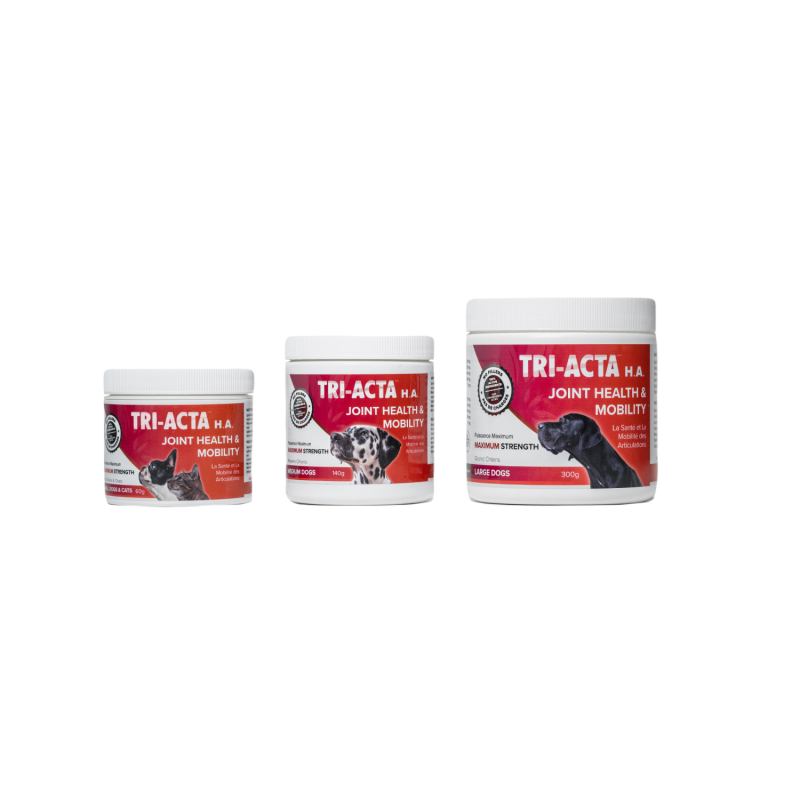
Surgery
Surgery is a common treatment option for various medical conditions, including some of those mentioned on this list. Surgery can be used to treat
- Broken bones
- Torn ACL
- Certain cancers
- Cushing’s disease
- Etc
To name a few.
Surgery is typically used as a way to treat or ‘cure’ an ailment permanently. Treatment after the surgery is completed will typically include surgery recovery, like rest, a proper diet, physiotherapy if necessary, making sure stitches don’t get infected, the list goes on.
Cancers are typically treated in similar ways as humans, like by surgery, radiation, or chemotherapy.
Physiotherapy
Typically this is completed after surgery or to help keep your dog agile with a condition that’s not treatable.
This therapy includes building up your pooch’s strength and flexibility so they can become as lively and mobile as possible. Hopefully, as lively and mobile as they were pre-ailment, although that’s not always possible.
Rather than just one thing, physiotherapy can include multiple steps, like different exercises and massages. A professional, either a qualified vet or physiotherapist for pets can create a plan for your animal’s restoration.
Weight Loss
Extra weight on your dog can be hard on your dog, including its joints. So, losing extra weight can be an essential part of recovery for your dog, significantly if the ailments have affected mobility (like when their legs become weak and shaky).
You can buy particular foods that help with weight management (although be sure to maintain a balanced healthy diet and not underfeed your dog) and exercise your dog regularly (when your dog can safely and regularly exercise).
Q&A
My dog has diarrhea, and his back legs are weak
If your dog has diarrhea and his back legs are weak, your dog may be suffering from one (or many) of various medical ailments, including paralysis or seizures. Your best option is to take your dog to the vet as soon as it’s safe for your pooch and you’re able to do so.
We recommend taking precautions in case your dog continues to defecate during the ride to the vet. Putting towels down in the car, for instance. However, ensure your dog is comfortable, especially if he’s having trouble moving and/or standing due to his weak back legs.
What would make a dog’s back legs shake?
There are a lot of issues that could make your dog’s back legs shake. Those that we’ve included in this article are
- Muscle atrophy
- Injuries, like broken bones, a torn ACL, cuts/wounds, infections, luxated patellas …
- Seizures
- Diseases, like those affecting the spine, certain cancers, cushing syndrome.
Can seizures in dogs cause leg weakness?
Yes, seizures can cause weakness in your dog’s legs. Dog back legs weak after a seizure is a common occurrence. It’s possible your dog could even collapse while having it.
If your dog is having a seizure, make sure you keep them safe and cool until the seizure is over and you can take them to the vet. Seizures may be a result of an underlying medical condition.
In Summary
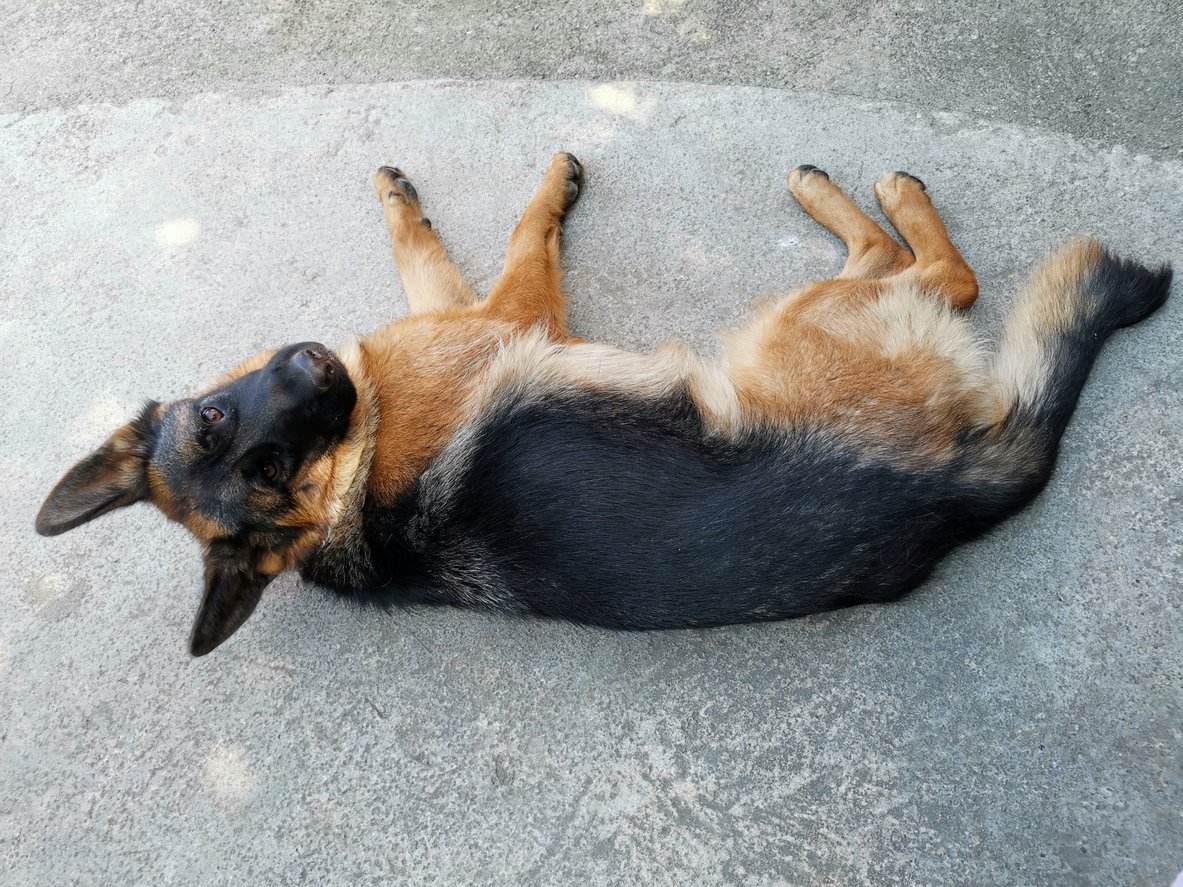
If your dog has mobility issues due to weak and shaking hind legs, try not to panic. Now you know that there are a variety of dog back legs weak and shaking treatment options, ranging from curing the issue to managing pain and symptoms so your pooch can live happily for as long as possible. Those treatment options can include
- Visiting the vet
- Medication, including prednisone
- Supplements
- Surgery
- Physiotherapy
- Weight loss
To start your pet down the road to recovery, or to help prevent the dog wobbly back legs from ever occuring, shop our joint supplements for pets.
Also, be sure to check out our blog and resources pages for more information on your pets’ health.
Newsletter Signup
Subscribe to our newsletter to receive the latest news and exclusive offers.
.jpg?height=2000&name=Cliick_Integricare-DISPLAY-REVISEDV2%20(1).jpg)
Proactive & Therapeutic Joint Supplements
When given daily, Integricare joint supplements recover bone and joint injuries faster and help prevent mobility injuries from happening in the first place.

